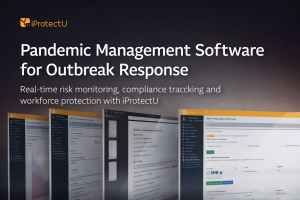What is Silicosis and who is at Risk?
Silica is a common mineral found in sand, rock, and other materials. The inhalation of silica dust can cause a serious, disabling lung disease called silicosis. When inhaled, silica dust can damage the lungs. Over time, this damage can lead to scarring and inflammation, making it hard to breathe.
Occupations susceptible to Silicosis include mining, construction, quarrying, manufacturing, sandblasting, stone cutting, foundry working and agriculture.
Research Highlights
The research led by Imperial College, London found that a worker’s lifetime exposure to ‘permissible’ levels of RCS would result in considerable risk of developing silicosis.
The National Heart and Lung Institute department at Imperial College concluded that a reduction in the legal occupational limit to 0.05 mg/m3 over an eight-hour work shift would result in a significant reduction in silicosis cases. This is the legal occupational limit in the United States. Such a reduction could save countless lives in industries such as construction and mining.
A separate study led by clinical researchers from Royal Brompton Hospital and Imperial College in London, which was published on the same day, led to suggestion by scientists that a ban on the use of artificial stone in the manufacture of quartz kitchen worktops should be considered.
This came after the first eight cases of artificial stone silicosis reported in the UK were treated.

Managing the risk of Silicosis - Employer Guidelines
- Risk Assessment: Risk assessment is crucial for identifying sources of silica dust exposure in the workplace. This would reduce the risk of silicosis among workers. The iProtectU risk assessment software is fully customisable and will enable you to manage and control silica risk https://iprotectu.com/risk-assessment-software/
- Engineering controls: Employers should install engineering controls such as local exhaust ventilation systems to capture silica dust at the source.
- Wet methods: Water or other wetting agents should be used to suppress dust during processes like drilling and grinding.
- Personal protective equipment (PPE): Workers should have access to appropriate PPE, including respirators, gloves, and eye protection.
- Health monitoring: Employers should conduct periodic health assessments, including chest X-rays, for workers who are exposed to silica dust.
- Training: Comprehensive training must be provided to workers on the hazards of silica dust, preventive measures, and suitable use of PPE. The iProtectU Learning and Development Software and its associated management system includes all the training resources you need https://iprotectu.com/learning-and-development-software/
- Dust sampling: Employers should arrange regular monitoring of silica dust levels in the workplace.
Managing the risk of Silicosis - Employee Guidelines
- Avoid dust generation: Use techniques that minimise dust generation, for example wet sanding.
- Report concerns: Report any concerns about silica dust exposure to your line manager or safety department.
- Follow safety procedures: Adhere to all safety procedures and guidelines outlined by your employer.
- Use PPE: Wear the required and provided PPE, including respirators, when working in areas with silica dust.
- Attend training: Attend training sessions on silica dust hazards and prevention measures.








